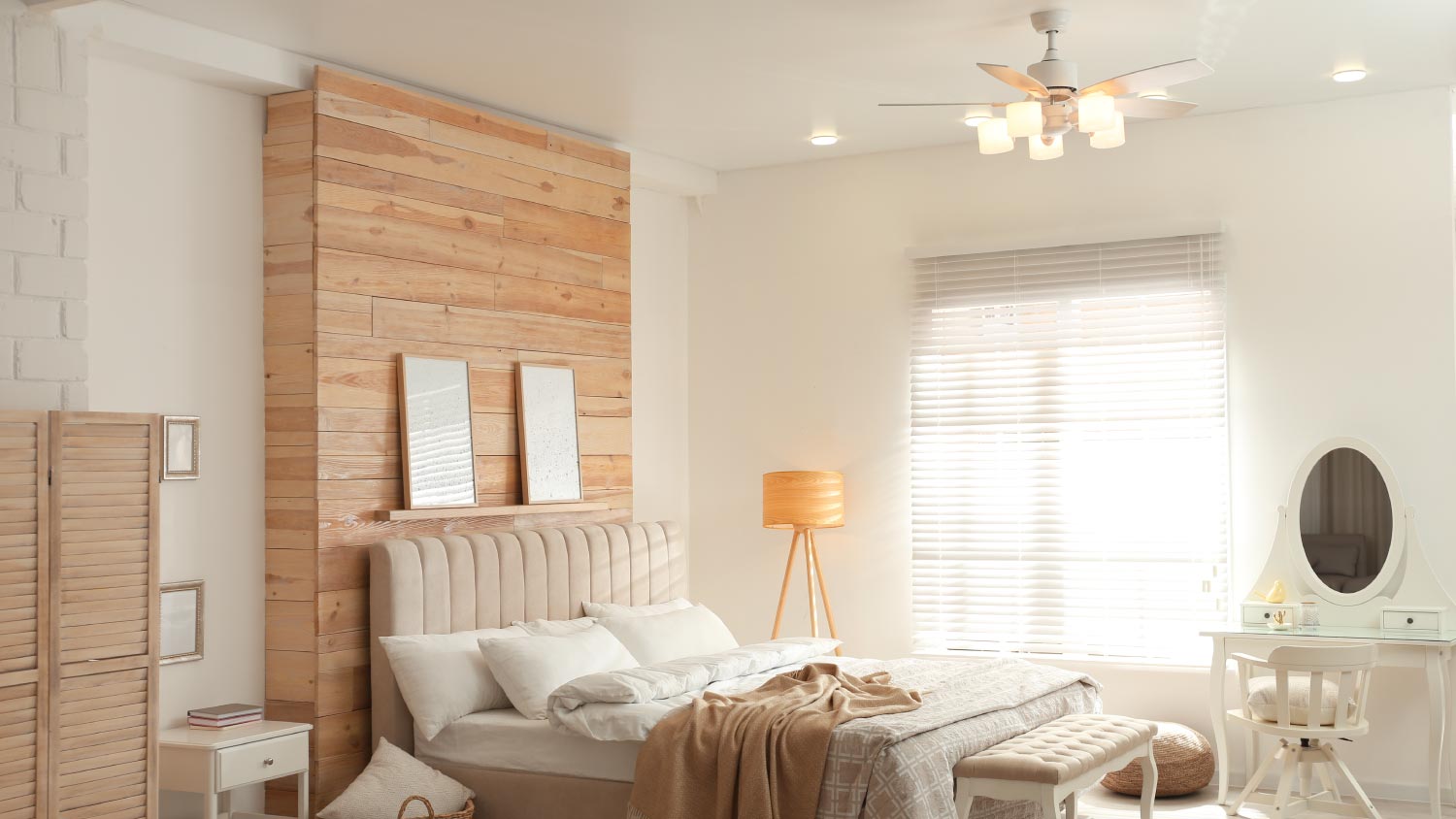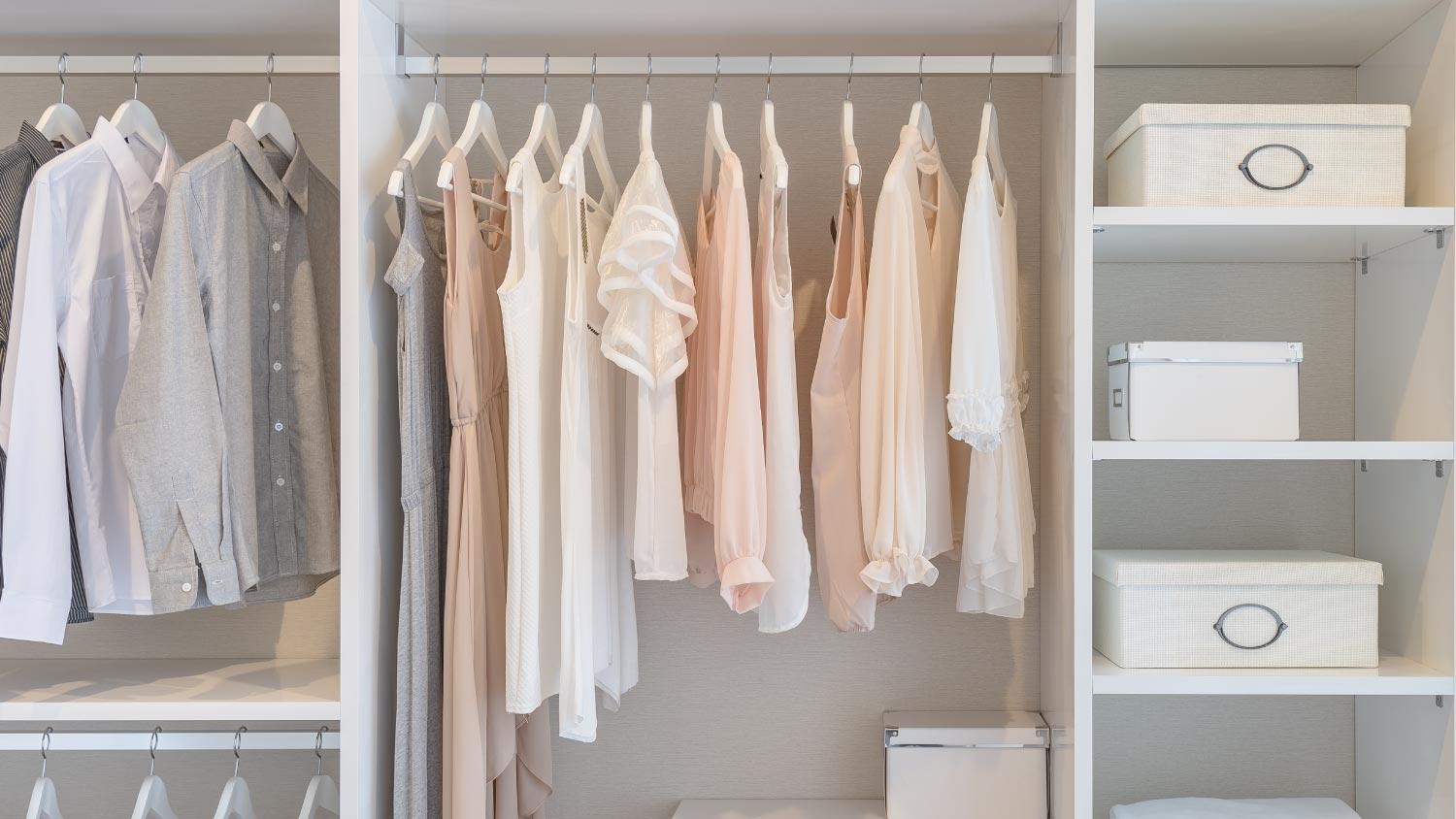
Wondering how much it costs to remove an acoustic ceiling? Get cost estimates, key factors, and expert tips to help you plan your ceiling update.
You don’t need to be a designer—you just need to know what you like


An empty living room is a blank canvas filled with possibilities—but that can feel sort of overwhelming, especially if you just moved in. Not only do you have to unpack, you also have to make your space feel like home. The good news is that thinking like an interior designer just takes a little know-how. These tips will show you how to decorate a living room that suits your space and personal style.
Before you can fill your space, you need to understand it. Certain decor ideas can get lost in a large room but make a small room feel more spacious (hello, well-placed mirrors). Take careful measurements—not just of the room’s circumference, but of certain areas where you might place furniture or decor. Think about the size of window treatments, shelving, and other nooks. Don’t forget to include the ceiling height! Drawing out a floor plan can help you visualize.

Before you can decorate your room, narrow down your style by creating a vision board filled with inspirational images, patterns, textures, and key colors. This will help you stay on track (and help a local interior designer understand your project if you decide to go that route).
While you make your board, think deeply about what you want your room to look like. Do you prefer traditional living rooms with neutral shades, or are you someone who’s constantly scouring Instagram for the latest style inspiration? Do you want to create a relaxing, minimalist space with elements of Feng Shui, or are you all about eclectic maximalism? There’s no wrong answer, just ideas!
Your color palette will help inform every decor choice you make. It’s what transforms a seemingly random accessory into the perfect item that ties your entire room together. You can start by choosing a color from your existing furniture. If you’re starting from scratch, think about what you like. Choose a bold color (or two) as an accent and mix it with like-minded neutrals using the 60-30-10 rule by making:
60% of your space a neutral dominant color
30% of your space a second color
10% of your space a bolder accent color
Remember: Lighter colors can open up a small room, while darker colors can ground a large space—especially when used closer to the floor.

Wall treatments can dramatically transform a room before you even add furniture. Paint is the standard, especially in modern homes, but it’s not the only solution. Both paneling and wallpaper can feel fresh and nostalgic at the same time. You can even reach for a vintage wall treatment like picture molding or crown molding. If you’re not afraid to go bold, mix styles. Wallpaper can be used as an exciting accent in an otherwise neutral room, and paneling can create a cozy feeling with the right paint to match.
Furnishing living rooms is all about spacing. Large furniture can overwhelm a small room, so this is where your measurements become super important. Take stock of what you already have and build your room around your largest piece of furniture. In this case, that’s probably the couch. Because the couch is the focal point of a living room, it’s okay to splurge if your budget allows it. You can save in other areas where it’s not as noticeable.
Once you figure out where to put the couch, start filling out the rest of the room. This helps you avoid a potentially awkward room layout.

Here’s a simple decorating tip that will instantly make your living room feel more relaxed: add a lamp rather than only utilizing overhead lighting. Bonus points if you use smart bulbs or choose a lamp you can dim. Ambient lighting is the key to a cozy space, but it’s really all about balance.
Ideally, you’ll have a balance of natural and artificial light, and use window treatments to control that balance. Just remember, lighting changes more than the vibe of a room. It can also change the way your color palette looks, so choose your bulbs wisely.
Your living room really starts feeling like home once you begin curating wall decor and accessories—and it’s best not to rush the process. Many homeowners collect their decor over time because special, sentimental pieces aren’t typically something you can pluck out of a big box store.
That being said, there are simple ways you can get started. For art, you can either create a gallery wall or go for a large-scale piece. Mirrors can help brighten and widen a space, while wall hangings, pillows, and blankets can add texture. This is a great place to incorporate your accent colors.
Area rugs can add texture and color to a neutral space, but they also can help you section off an open-plan living room to make each area feel intentional. Here, size matters. You should allow a gap of at least 8 inches or as much as 24 inches between the end of the rug and your wall.
Small rooms will have smaller gaps, and large rooms will have larger gaps. Either way, your upholstered furniture should be able to fit at least two feet on the rug.
Your rug should also work with your chosen color palette. Keep the rug material in mind—wool rugs can shed, especially if they’re low quality. Jute or sisal rugs aren’t as soft under your toes.
From average costs to expert advice, get all the answers you need to get your job done.

Wondering how much it costs to remove an acoustic ceiling? Get cost estimates, key factors, and expert tips to help you plan your ceiling update.

Find out how much it costs to install crown molding by type and size. Use our expert guide to figure out how much crown molding you need, how much crown molding costs near you, and whether you need to hire a pro.

The cost to replace trim depends on factors such as style, material, and whether you hire a pro. Find out what your budget could look like for this project.

Discover the average cost of stretch ceiling installation, key price factors, and ways to save. Get transparent pricing to plan your stretch ceiling project.

Create a stunning and functional home or remodel with an interior designer. Follow these common interior design questions to prepare for working with a pro.

Discover the cost to install a built-in wardrobe. Learn about average prices, installation factors, and ways to save on your custom storage project.